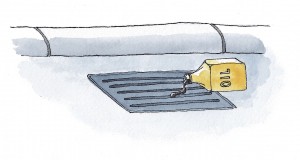40 years of the Safe Drinking Water Act
August 10, 20142014 marks an important date for the water coming out of your tap: Four decades of the Safe Drinking Water Act.
Signed into law by President Gerald Ford in 1974, the Safe Drinking Water Act was, quite literally, a watershed moment for public health and safety. It set federally mandated standards regarding the quality of Americans’ drinking water, and introduced regulation of water supplies on the state, local and national levels.
Although there were already some laws concerning water safety on the books, they were, by and large, outdated and ineffective: According to the EPA, Federal regulation of drinking water dated back to 1914, when “the U.S. Public Health Service set standards for the bacteriological quality of drinking water. The standards applied only to water systems which provided drinking water to interstate carriers like ships, trains, and buses, and only applied to contaminants capable of causing contagious disease.”
According to the EPA’s write up, in the 1960s, concerns about pollution and the

discovery of “organic contamination in public drinking water and the lack of enforceable, national standards persuaded Congress to take action.”
One problem was that agriculture and industry had been using new chemicals that were ending up in water supplies because of discharge practices and runoff. “A study in 1972 found that 36 chemicals were detected in treated water taken from treatment plants that drew water from the Mississippi River in Louisiana. As a result of this and other similar studies, new legislative proposals for a federal safe drinking water law were introduced and debated in Congress in 1973.”
Since the law’s passage, water quality has vastly improved. Gone are problems like Ohio’s flaming Cuyahoga River, which was so polluted with chemicals that the surface ignited numerous times, including an oft-cited blaze in June 1969 that nearly destroyed two bridges.
Municipal water supplies, such as those provided by LCA, undergo rigorous testing and treatment to ensure the highest quality. Efforts are made to protect water at its source — to keep the contaminants from ever reaching the water in the first place. And there is more public awareness about the importance of clean water than ever before.
There is, of course, still much work to be done to protect water quality, and amendments to the Safe Drinking Water Act in 1986 and 1996 reflect its ability to change with the times . The 1996 amendment, for instance, recognized “source water protection, operator training, funding for water system improvements, and public information as important components of safe drinking water.” It effectively broadened the approach to safe drinking water through protection from “source to tap.”
If you ever have questions or concerns about the quality of your drinking water, don’t hesitate to contact us. And to read more about The Safe Water Drinking Act, check out this page from the EPA.
To find out what we do to your water supply, go to our “About Your Water” page and click on your municipality for an explanation.